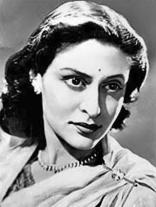(My column in Mint Lounge, September 1 2018)

In the summer of 2004, when Kamala Markandaya died in London, she brought to close a life of impressive literary output married to an old-fashioned tendency towards self-effacement. Intensely private and studiously evasive of the press, her last two-and-a-half decades saw this recluse retreat even further into a cocoon, so that whole generations of readers failed to encounter her work at all. Some of it was illness, but another cause for her undeclared retirement was that she seemed to have lost her audience. In fact, after 1982, Markandaya had trouble publishing her work and her final novel appeared posthumously in 2008, 20 years after it was written. The general consensus is that she had grown “outdated”, and that in the reorientation which followed Salman Rushdie’s sensational Midnight’s Children (1981), all who came before were inevitably eclipsed. As one observer put it, “Whether ahead or behind literary trends,” by the time her name appeared in the obituaries, “Markandaya’s work was almost forgotten.”
There is truth to this gloomy remark, made stark by the irony that only 27 years before Midnight’s Children, it was Markandaya who had made a sensational global debut with Nectar In A Sieve. In 1954, at the age of 30, this Kannadiga, who called herself “Hindu-Brahmin in religion” and “anti-imperialist in politics”, produced a 189-page best-seller, earning not only critical acclaim but as much as $100,000 in prize money. In the US—where she shared a publisher with Jawaharlal Nehru—her novel was absorbed into school curricula: She was celebrated as one who offered, in polished English, an “authentic” picture of changing Indian social dynamics. It did not matter that the author did not see herself as a spokesperson for India, for her readers abroad thought that was precisely what she was. This also explained why she won more admiration overseas than at home. As the poet and critic Nissim Ezekiel scoffed in a 1979 review, “An Indian writer living permanently abroad can always be trusted to write knowingly about life in an Indian village.”
Markandaya had not always lived abroad. Born Kamala Purnaiya in 1924 in princely Mysore, as a student in 1940s Chennai she was briefly also a journalist. At some point, she decided to spend 18 months in a village “out of curiosity”. This inspired the setting of her first novel, centred on Rukmani and her farmer husband, who negotiate not only nature’s cruel whimsies but also change in the disruptive form of a modern tannery. The theme may sound predictable—rural forbearance in the face of industrialization—but the novel did not succumb to cliché. On the contrary, the protagonist’s “voice” can sometimes seem a little too cosmopolitan to fit into her context. Markandaya, of course, rejected criticism that her characters were not fully “there”: “The fundamental mistake,” she argued, “is to think that a peasant thinks differently from you.” Yet, the novel has its peculiarities, when villagers talk of “fried pancakes” and “rice cakes” to avoid words like pakoras and idlis. She won adulation for presenting India to the world, but to many Indians this came at the cost of genuine “Indianness”.
By 1948, Markandaya had moved to London and married an Englishman. Her later life informed the inter-racial, East-West dynamics that animate her novels. Some Inner Fury (1957) features an Indian woman during the Quit India Movement whose nationalism is juxtaposed against her romance with an Englishman, while Possession (1963) presents a talented goatherd “discovered” by a calculating Western aristocrat, who launches him as an exotic artist in London. Then, of course, disillusioned, he returns to the spiritual embrace of India. There are parties, there is sex, there is a swami, but this is also where Markandaya first succumbs to the allure of cliché she so skilfully avoided in her first novel.
After memorable works that reflect on faith and reason, hope, frustration and more in urban India, when Markandaya tried to break away from what was expected of her, she did not find support forthcoming. In The Nowhere Man(1972), she turned the gaze away from Indian settings to the challenges faced by an immigrant in Western society. The book, however, was met with “thunderous silence”. As long as she played the role charted for her as a storyteller of India, it seemed, she was welcome, but a commentary on the West would not be easily digested. Perhaps owing to this pressure, her next novel, Two Virgins (1973), returned to the village, sinking irrecoverably into stereotypes. It begins promisingly, but soon one character is seduced and damaged by the Big Bad City, yearning for stardom and freedom, while her sister tediously romanticizes all that is rural. The village, for example, was where “You knew each grove, each acre, each homestead…every pathway…. You knew who you were.” The reader, then, can agree with the critic who said that it is “with relief that one drops” this book.
This, then, became the tragedy of Markandaya. She was gifted, and possessed both skill and perspective, but over time there was “a slow decline in her reputation as a writer that finally dwindled to silence”. The West, where she won the principal share of her appreciation, moved on in the 1980s to a new generation with new approaches, while her motherland in the East thought her de-Indianized and out of touch. Her characters were, as Ezekiel put it, mere “puppets, manufactured for those who know nothing about India”. How Markandaya the woman negotiated this crisis is not known—she rarely gave interviews, left no autobiography, saw few people, and for all practical purposes, disappeared from the horizon. But for all that, one hopes, perhaps she had some consolation in knowing that at least for a brief period, she had been at the forefront; that it was she who told India’s tales to the world beyond, and brought a young, new nation into the global literary conversation.